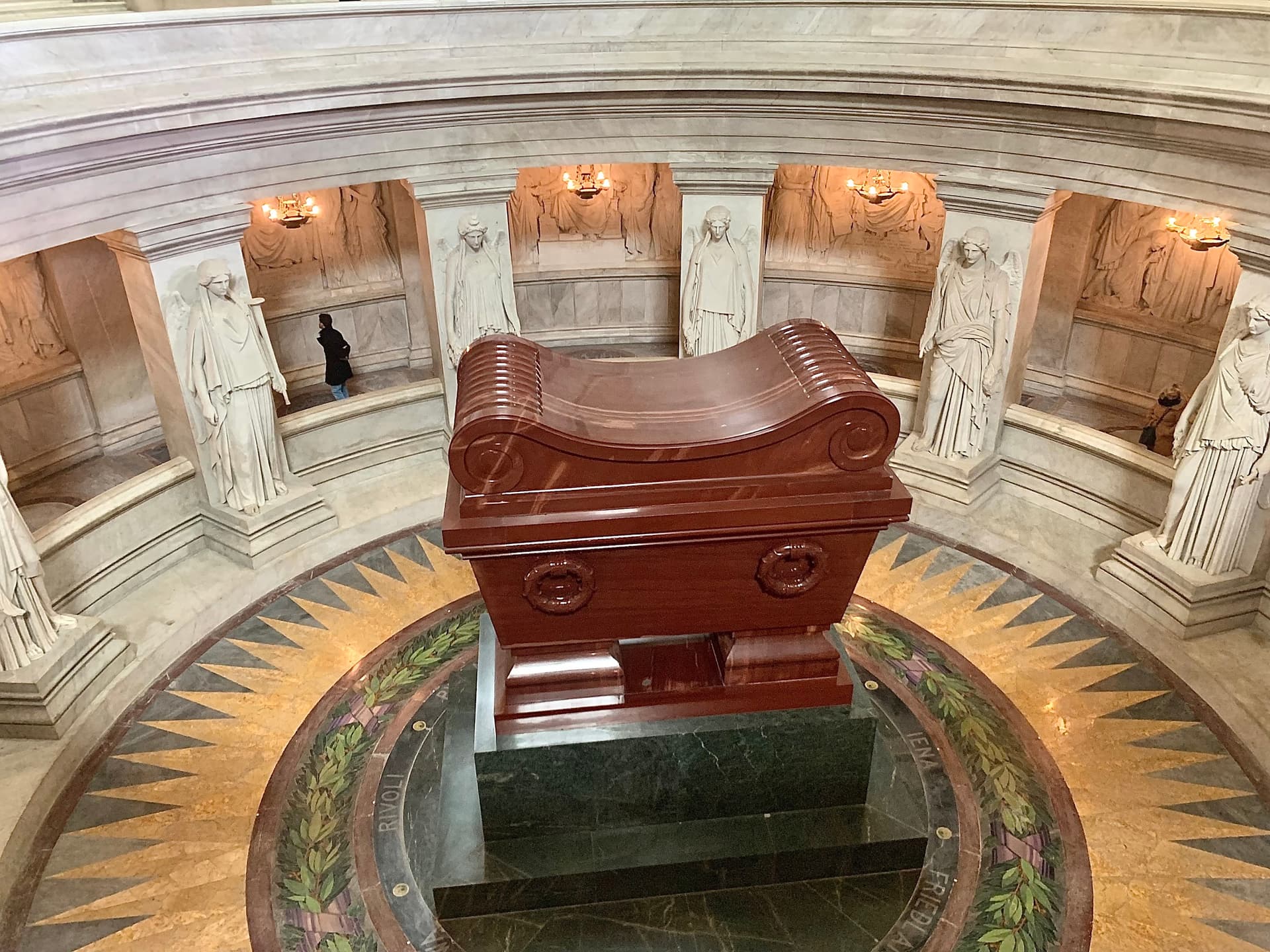Audio GuideTomb of Napoleon
Tombeau de Napoléon Ier
Napoleon is interred in this grand, 1677 Musée de l’Armée structure with a painted domed roof.
Welcome to the Tombeau de Napoléon Ier at Les Invalides in Paris. This grand structure houses the remains of Napoleon, brought back from Saint Helena on the initiative of King Louis Philippe I and his minister Adolphe Thiers in the mid-nineteenth century. The story behind the repatriation reflects an effort to reclaim national heritage and honor a figure who deeply influenced French history.
Inside the massive painted dome, you will find a circular crypt designed by architect Louis Visconti. An entrance decorated with statues known as atlantes by Francisque Joseph Duret welcomes you into a space where a gallery, supported by twelve pillars, displays ten large relief panels by Pierre-Charles Simart. These panels showcase Napoleon’s key achievements and contributions, from the creation of the Napoleonic Code to major public works, as well as his celebrated return from exile.
At the center lies a monumental sarcophagus carved from purple Shoksha quartzite, sourced from Russian Karelia. It rests on a base of green granite from the Vosges paired with black marble from Sainte-Luce, materials chosen for both their beauty and the cultural ties they reveal. The construction spanned over two decades, marked by challenges such as the death of the original architect and delays from competing projects, ending with a solemn inauguration by Emperor Napoleon III in the year eighteen sixty-one.
Today, the site also includes modern elements such as the Memento Marengo installation, a unique tribute linking historical legacy with contemporary artistic expression. The tomb sits within a complex that honors not only Napoleon but also his brothers and other notable figures, making Les Invalides a rich celebration of history and art.



